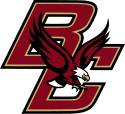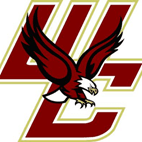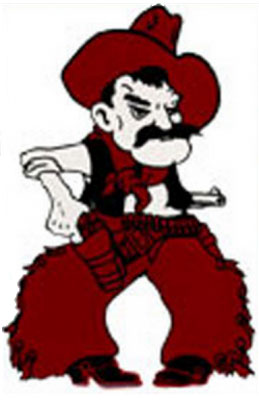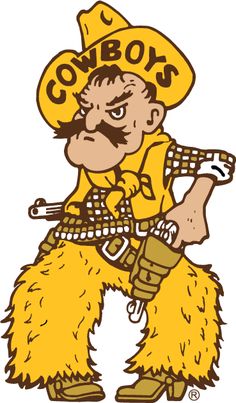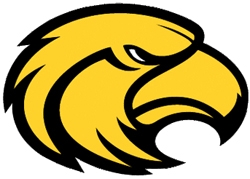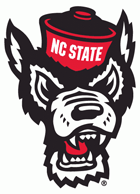What’s in a Name? Or a Logo? N.C. State, the “Wolfpack” Name, and Lessons in Sports Trademarks
There is a lot of overlap in sports team names. Repetition is noticeable when considering just professional and collegiate football, baseball, and basketball, where Lions, Tigers, and Bears (and Eagles, Warriors, and Wildcats) proliferate. Add in women’s sports, other major sports like hockey and soccer, semi-pro and minor leagues, high-school teams, and even recreational leagues, and the duplication is pronounced, maybe even unavoidable.
Yet it is rare to see disputes over ownership of a team name.
North Carolina State University, whose teams are known as the Wolfpack, is the rare case. The school owns two federal trademark registrations on the word WOLFPACK—known as a “typed drawing” or “standard character” mark—as well as other registrations on designs and logos. The oldest standard-character registration dates back to the early 1980s and comprises several categories, including apparel and college sports events. NC State claims to have used the nickname in athletics competitions since 1921.
This has proved to be a problem for other schools, particularly the University of Nevada, Loyola University of New Orleans, and most recently Keuka College. Each of these schools uses (or—spoiler alert—once used) “Wolfpack” or “Wolf Pack” as a nickname for their sports teams.
NC State’s weapon is trademark law, which is meant to help consumers differentiate among competing products and services in the marketplace. The law gives rights—including the right to exclude others from using marks that are likely to cause confusion as to source, origin, connection, or affiliation—to the first person to use the trademark in interstate commerce.
“Likelihood of confusion” is the key element of trademark infringement. There are several non-exhaustive, non-exclusive factors that go into whether a mark is “likely to confuse”:
- the similarity in the overall impression created by the two marks, often referred to as the “sight, sound, and meaning”;
- the strength of plaintiff’s mark, measured in how distinctive it is;
- the “proximity” or similarities of the goods or services marked, including a comparison of their marketing channels;
- any evidence of actual consumer confusion;
- defendant’s intent in adopting its mark;
- the physical proximity of the goods in the retail marketplace;
- the degree of care likely to be exercised by the consumer; and
- the likelihood of expansion of the product lines.
No one factor is determinative, though some are more important. The list is not a “score card” to keep track of who wins the most, nor is the conclusion dependent on “bean counting” or on a balancing all factors. Rather, their relative weight will be case-specific.
Disputes over sports logos and other trademarks—more common than over team names—can be evaluated using these factors. In the sports context, many of the factors weigh in favor of the plaintiff/senior user: most sports trademarks are usually highly distinctive and therefore strong, and the goods and services (athletic events, and usually also apparel and other gear) of a mark owner and alleged infringer precisely overlap. Other factors point in the opposite direction: there usually isn’t any evidence of actual confusion or intentional copying; the marks are often separated by large geographical distances, not in close physical proximity; and the sports consumer is generally highly sophisticated, thus able to distinguish between similar marks in a crowded sports marketplace. The remaining factor—similarity of the marks—could therefore have great weight.
But in sports, where unsophisticated consumers are scarce, can likelihood of confusion be shown when two logos are not nearly identical, or two schools are not geographically close? Arguably, extensive travel by collegiate and even high school teams, and nationwide broadcasts of their games, may diminish the mitigating effect of geographical separation. So mark similarity may have an even greater importance.
Most disputes take place out of the public eye, as colleges and universities send cease-and-desist letters to high schools over logos and mascots. Just some examples: Penn State University (Nittany Lions) asked Buna High School (Cougars) in Texas to stop using an identical logo. The University of Connecticut thought that the Morgan High School, just an hour away in Clinton, CT, used a husky logo that was too similar and demanded a change. The author’s own high school—Wayland-Cohocton Central School (Eagles) in Wayland, NY—received a cease-and-desist letter from Boston College (Eagles). At issue was BC’s trademark that features a flying eagle superimposed over the letters “BC”; WCCS uses the flying eagle and similar colors and fonts, but the letters “WC.”
Actual litigation over sports logos, however, is uncommon. Oklahoma State sued New Mexico State over its “Classic Aggie” mascot, claiming that it infringed OSU’s “Pistol Pete” mark. The schools settled, holstering their pistols for a nominal license fee and a limitation on the amount of “Classic Aggie” merchandise that could be used. OSU had previously settled a dispute with the University of Wyoming over the mustachioed, bowlegged cowboy. UW had applied for trademark registration 11 days before OSU. But OSU’s was granted first, and it opposed UW’s still-pending application. The schools came to a concurrent-use agreement specifying the looks and limiting the uses of each logo.
Like Pistol Pete, other logo disputes have been contested in the Trademark Trial and Appeals Board when junior users have attempted federal registration. The Iowa Hawkeyes prevented the Southern Mississippi Golden Eagles from registering a new logo they adopted in 2003, using some evidence of actual confusion to help convince the Board that there likely would be consumer confusion in merchandise sales. (Southern Miss launched a new logo in 2015.)
But identical names usually don’t create a stir. With over 1,600 “Eagles” and 1,350 “Tigers” teams, it is no surprise that a “live and let live” mentality generally prevails. In fact, the more teams using a name, and the longer that overlapping use continues, the less likely a court would allow an “owner” to exclude others from such use. NC State bucked that trend, and each of the three disputes holds a different lesson.
Nevada’s teams are known as “Wolf Pack”—two words. Though two words arguably could just as easily be confused with the single word mark, Nevada didn’t make that argument. Instead, the dispute focused on Nevada’s secondary logo, which featured a snarling wolf’s head wearing a top hat. A wolf in a cap is one of NC State’s logos, and to it the similarities were too much. Whether agreeing or not, Nevada chose to adopt a different (much better, in the views of many) logo rather than fight.
Loyola made a small change to placate NC State: it changed from “Wolfpack” to “Wolf Pack.” Interestingly, Loyola claims that its first use of “Wolfpack” dated back to the early 1920s, nearly as far as NC State’s. Had Loyola been able to show it was a senior user, there could’ve been a stand-off: NC State’s federal registrations had become incontestable after five years, so Loyola couldn’t challenge ownership. But neither could NC State prevent Loyola from using “Wolfpack” to the same scope and extent as existed at the time of registration. (In fact, if it were the senior user, Loyola could have prevented NC State from using the mark if it proved likelihood of confusion.)
Keuka College gave up and agreed to change its name (to the Wolves). Keuka had adopted “Wolfpack” only in 2014, concluding that its prior nickname, the “Storm,” was insensitive after towns in its area of upstate New York had endured severe flooding. The decision to abandon “Wolfpack” was entirely pragmatic, and its public statement highlighted some of the legal issues that arise in this context:
Many athletics teams co-exist with the same trademarked nickname, which is legally possible because the litmus test is whether there was a likelihood of consumer confusion between the two marks.
“No one could reasonably confuse Keuka College with NC State given the significant differences in our schools—from our size, to our division, to our colors,” said Dr. Jorge L. Díaz-Herrera, president of Keuka College. “While NC State may be willing to spend their monetary resources on legal challenges at a time when the very value of higher education is being called into question, Keuka College is not.”
Capitulating may be pragmatic, but could it embolden the victor? How aggressive will NC State be? Its registrations cover “college-level men’s and women’s sporting events,” so perhaps it is targeting only collegiate schools. But it also has registrations in other categories, including apparel and other gear. Will it go after youth football teams, club baseball, or AAU basketball?
In general, it’s almost certain that we’ll see more trademark disputes in the future. Merchandising is growing into an important revenue source for many colleges and universities, and high school teams are becoming more and more visible on the Internet, social media, and television broadcasts. As battles are joined, the future may bring some clarity on some of these unsettled legal questions.

